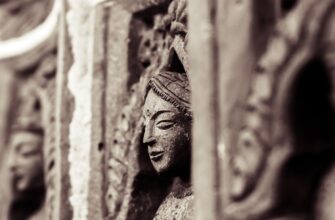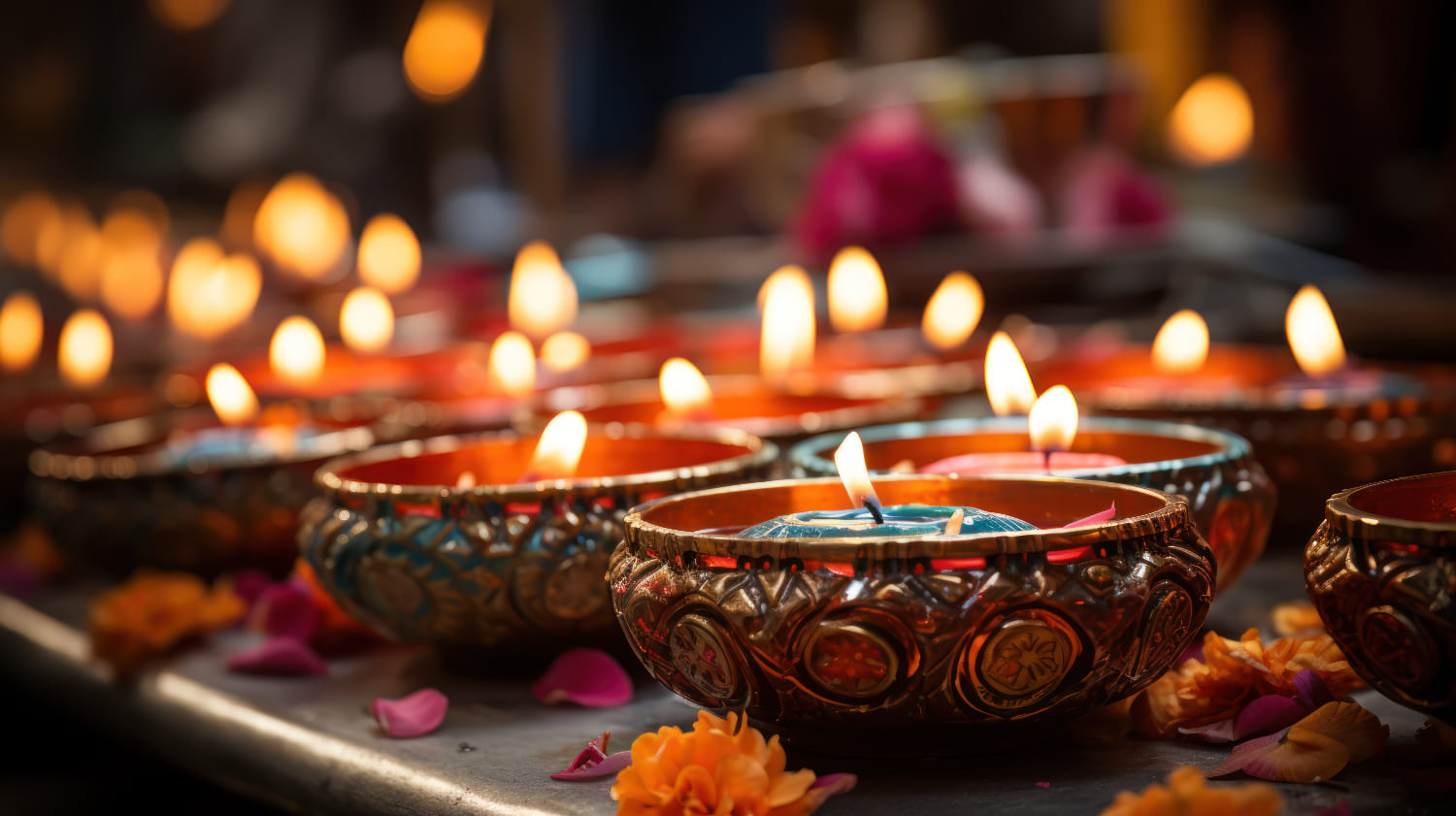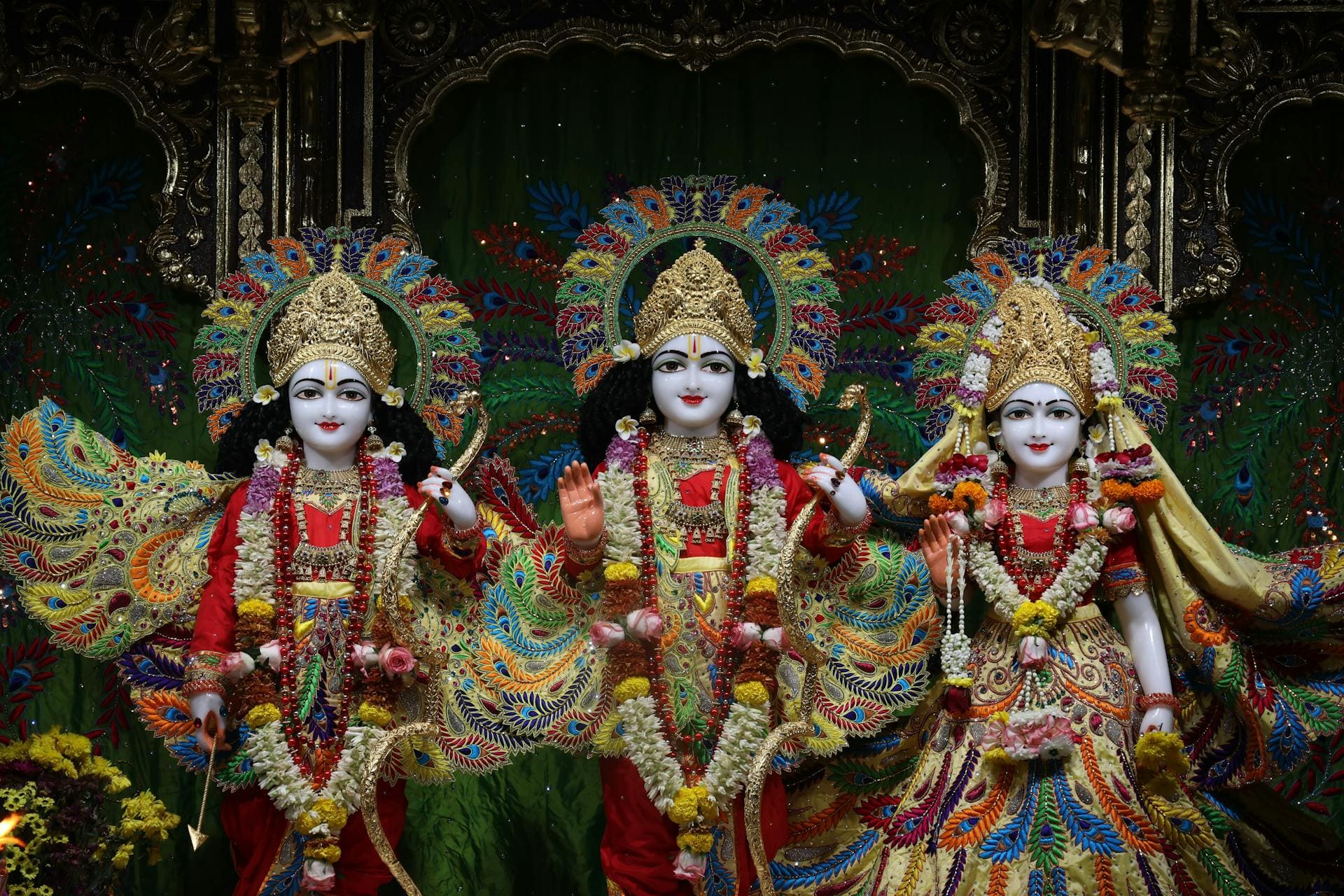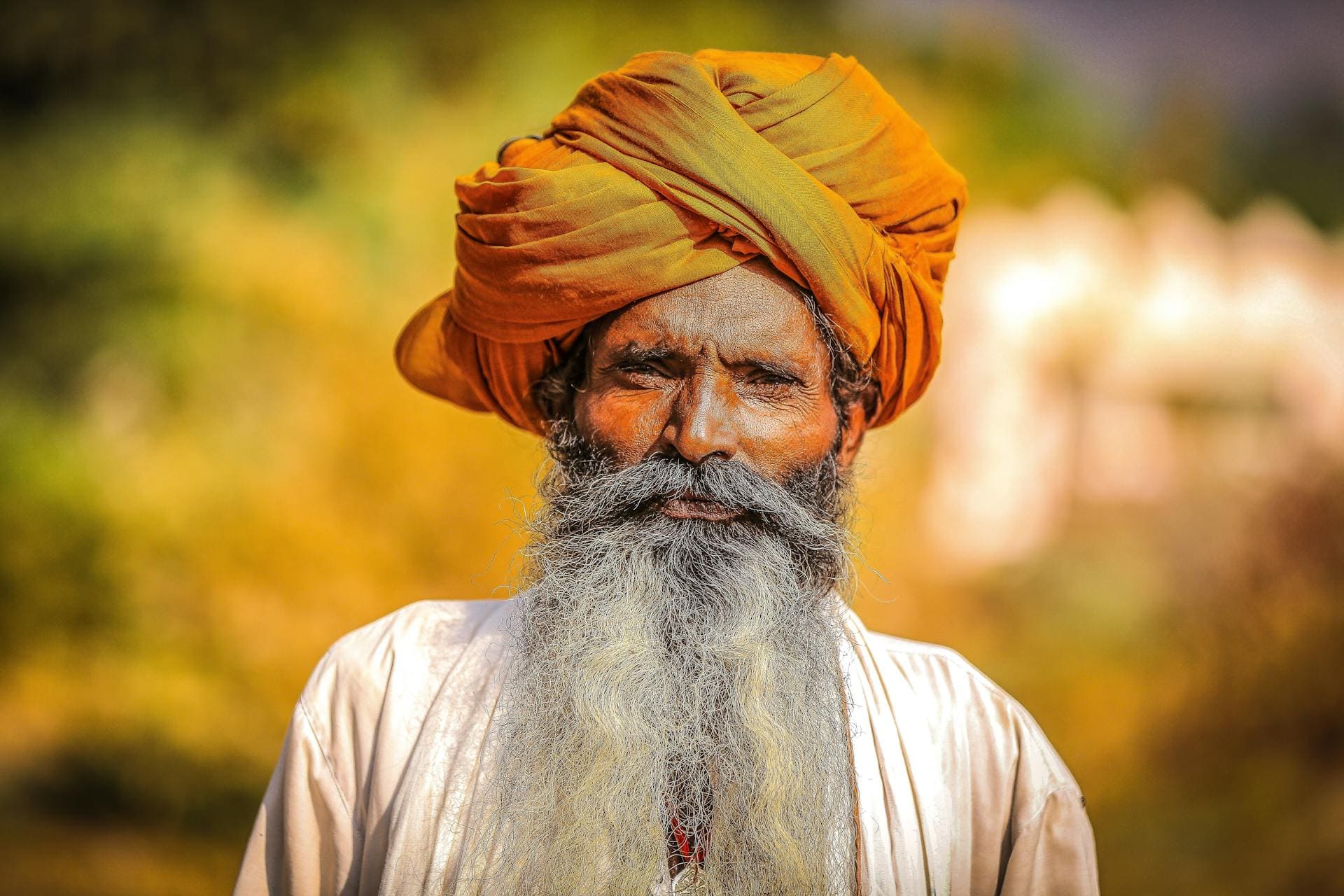Hinduism is one of the oldest and most complex religions in the world. It is a diverse and multifaceted religion with a rich history and a wide range of beliefs and practices.
Hinduism is not a single, monolithic religion, but rather a collection of different religious traditions and philosophies that have evolved over time.
There are several different types of Hinduism, each with its own set of beliefs, practices, and traditions.
Some of the major types of Hinduism include Vaishnavism, Shaivism, Shaktism, and Smartism. These different types of Hinduism are characterized by their worship of different deities, their emphasis on different philosophical concepts, and their unique religious practices.
This article will explore the different types of Hinduism in more detail, providing a comprehensive guide to the differences between them.
Whether you are a student of religion, a practitioner of Hinduism, or simply interested in learning more about this fascinating religion, this guide will provide you with a deeper understanding of the rich and complex world of Hinduism.
What is Hinduism?
Hinduism is a religion that originated in the Indian subcontinent and is considered one of the oldest religions in the world. It is a complex religion with a diverse set of beliefs and practices, and it is difficult to define it in a single sentence.
One of the defining features of Hinduism is its belief in reincarnation, which is the idea that after death, a person’s soul is reborn into a new body. This cycle of birth and rebirth is known as samsara, and it continues until the soul achieves moksha, or liberation from the cycle of rebirth.
Hinduism also believes in karma, which is the idea that a person’s actions in this life will determine their fate in the next life. The goal of Hinduism is to achieve a state of enlightenment, which is known as Brahman, and to be reunited with the ultimate reality, which is called Brahman.
Hinduism is a diverse religion with many different traditions and beliefs. Some Hindus worship a single god or goddess, while others worship multiple deities.
Some Hindus believe in the caste system, while others reject it. Despite these differences, all Hindus share a common set of beliefs and practices that are rooted in the ancient texts known as the Vedas.
The Four Main Sects of Hinduism
Hinduism is a complex and diverse religion with a rich history and a wide range of beliefs and practices.
One way to understand the many different approaches to Hinduism is to examine the four main sects or denominations: Saivism, Shaktism, Vaishnavism, and Smartism.
- Saivism
- Shaktism
- Vaishnavism
- Smartism
Saivism is the oldest of the four sects and centers around the worship of the god Shiva. This sect emphasizes the importance of meditation and the attainment of spiritual knowledge as a path to liberation.
Saivism also includes a number of sub-sects, such as the Kashmir Shaivism and the Siddha Yoga traditions.
Shaktism, on the other hand, focuses on the worship of the goddess Devi or Shakti. This sect sees the divine feminine as the ultimate reality and emphasizes the importance of ritual worship and devotion. Some of the sub-sects of Shaktism include the Tantric traditions and the Sri Vidya tradition.
Vaishnavism is perhaps the most popular of the four sects and centers around the worship of the god Vishnu and his various incarnations, such as Rama and Krishna.
This sect emphasizes the importance of devotion and love as a means to attain liberation, and also includes sub-sects such as the Sri Sampradaya and the Gaudiya Vaishnavism traditions.
Finally, Smartism is a more eclectic and inclusive sect that emphasizes the unity of all the different paths to God. This sect sees the various gods and goddesses of Hinduism as manifestations of the ultimate reality and encourages practitioners to choose the path that resonates most with them.
Smartism includes a number of different sub-sects, such as the Advaita Vedanta and the Bhakti Yoga traditions.
Vaishnavism
Vaishnavism is one of the major traditions of Hinduism, and it is centered on the worship of Vishnu, who is considered to be the supreme deity. Vaishnavas believe that Vishnu is the ultimate reality, and that he has manifested himself in various forms, or avatars, throughout history.
The most popular of Vishnu’s avatars are Rama and Krishna, and they are the subject of many of the stories and legends in Hindu mythology.
Vaishnavism is known for its emphasis on devotion, and it is often referred to as Bhakti Yoga, or the Yoga of Devotion. Vaishnavas believe that through devotion to Vishnu, they can attain liberation from the cycle of birth and death.
There are many different sects within Vaishnavism, each with its own beliefs and practices. Some of the most well-known Vaishnava sects include the Sri Vaishnavas, the Gaudiya Vaishnavas, and the Swaminarayan sect.
Each of these sects has its own unique approach to worship and devotion, and they all have their own sacred texts and traditions.
One of the key beliefs in Vaishnavism is the idea of dharma, or righteousness. Vaishnavas believe that it is their duty to uphold dharma in the world, and they strive to do so through their actions and their devotion to Vishnu.
In addition to worship and devotion, Vaishnavas also place a strong emphasis on ethical behavior and moral values.
Shaivism
Shaivism is one of the three principal forms of modern Hinduism, along with Vaishnavism and Shaktism. It is the organized worship of the Indian god Shiva, who is one of the principal gods of the Hindu religion.
Shaivism includes such diverse movements as the highly philosophical Shaiva-siddhanta, the socially distinctive Lingayat, and ascetics such as the dashnami sannyasins.
The Vedas speak of the mysterious, uncanny god Rudra, who is identified with Shiva. The character and position of the Vedic god Rudra remain clearly evident in some of the important features of the great god Shiva.
Major groups such as the Lingayats of southern India and the Kashmiri Shaivas contributed to the development of Shaivism.
Shaivism is practiced widely throughout India and has many distinct regional variations in both philosophy and practice. Its followers are referred to in English as Shaiva(s), or sometimes Saivite(s).
Shaivism emphasizes the worship of Shiva as the supreme being, and the ultimate goal of the Shaivite is to become one with Shiva after death.
Shaktism
Shaktism is one of the major forms of modern Hinduism, along with Vaishnavism and Shaivism. It is especially popular in Bengal and Assam. Shakti, the divine feminine energy, is the primary focus of Shaktism.
She is worshipped as the supreme goddess or as the consort of a male deity, generally Shiva. Many Hindus worship Shakti as the divine mother who calls for absolute surrender.
Shaktism is a denomination of Hinduism that worships Shakti (or Devi) in her many forms as the absolute manifestation of divinity. Practitioners of Shaktism (commonly known as Shaktas) conceive the goddess to be the personification of the universe’s primordial energy and the source of the cosmos.
Shaktas believe that the goddess Devi has both a benevolent and a fierce aspect, and they worship her accordingly.
The Shakta tradition specifically worships the goddess generically called “Devi.” She is worshipped most often as the consort of Shiva, but has also been raised to the status of the Supreme.
Although some books equate Shaktism with all major female deities (the “shaktis” of their respective consorts), the Shakta tradition specifically worships the goddess in her own right.
Smartism
Smartism is a movement in Hinduism that emphasizes the oneness of God and the importance of devotion to a personal deity. It was founded by Adi Shankaracharya, a Hindu philosopher and theologian, who sought to unify the diverse Hindu traditions under a common framework.
Smartism is characterized by its adherence to the Vedas, the sacred texts of Hinduism, and its synthesis of four philosophical strands: Mimamsa, Advaita, Yoga, and theism.
Mimamsa is a school of Hindu philosophy that emphasizes the importance of ritual and sacrifice, while Advaita is a non-dualistic philosophy that asserts the identity of the individual soul with the ultimate reality, Brahman.
Yoga is a spiritual practice that seeks to unite the individual self with the divine, while theism is the belief in a personal God.
Smartas worship a personal deity, usually either Vishnu or Shiva, but they also recognize the existence of other gods and goddesses. They believe that all gods and goddesses are manifestations of the one ultimate reality, Brahman.
Smartas also place great emphasis on the performance of daily rituals, such as puja (worship), japa (repetition of a mantra), and meditation. These practices are believed to help purify the mind and lead to spiritual growth.
One of the distinguishing features of Smartism is its rejection of certain practices in Hinduism, such as animal sacrifice.
Adi Shankaracharya believed that these practices were unnecessary and that they detracted from the true essence of Hinduism. Instead, Smartas focus on the pursuit of knowledge, devotion to a personal deity, and the performance of daily rituals.
Other Sects of Hinduism
In addition to the major sects of Hinduism, there are many smaller sects that have their own unique beliefs and practices.
One such sect is the Arya Samaj, which was founded in the late 19th century by Swami Dayananda Saraswati. The Arya Samaj emphasizes the authority of the Vedas and rejects the worship of idols and other forms of polytheism.
Another sect is the Brahmo Samaj, which was founded in the early 19th century by Raja Ram Mohan Roy. The Brahmo Samaj emphasizes the worship of a single God and rejects the caste system and other forms of social inequality.
The Ramakrishna Mission is another important sect of Hinduism that was founded in the late 19th century by Swami Vivekananda. The Ramakrishna Mission emphasizes the importance of service to others and the unity of all religions.
The International Society for Krishna Consciousness, or ISKCON, is a relatively new sect of Hinduism that was founded in the 1960s by A.C. Bhaktivedanta Swami Prabhupada. ISKCON emphasizes the worship of Lord Krishna and the chanting of the Hare Krishna mantra.
Other smaller sects of Hinduism include the Swaminarayan Sampradaya, the Radha Soami Satsang Beas, and the Divine Life Society.
Differences Between The Sects
Hinduism is a diverse religion with many different sects, each with its own unique beliefs and practices. The four main sects of Hinduism are Vaishnavism, Shaivism, Shaktism, and Smartism.
Vaishnavism is the sect that worships Vishnu, one of the three main gods in Hinduism. They believe in the importance of devotion and worship, and they often perform elaborate ceremonies and rituals to honor Vishnu. Vaishnavites also believe in the concept of karma, the idea that a person’s actions in this life will affect their future lives.
Shaivism is the sect that worships Shiva, another of the three main gods in Hinduism. Shaivites believe in the importance of meditation and spiritual practices, and they often wear rudraksha beads as a symbol of their devotion.
They also believe that Shiva is the ultimate reality and that all other gods and goddesses are manifestations of him.
Shaktism is the sect that worships the goddess Shakti, who is seen as the divine feminine energy of the universe. Shaktas believe in the power of the goddess and often perform rituals and ceremonies to honor her.
They also believe in the concept of maya, the idea that the world we see is an illusion and that the true reality is beyond what we can perceive.
Smartism is a sect that is more inclusive and flexible than the other three. Smartas believe that all gods and goddesses are different manifestations of the same ultimate reality, and they often worship different deities depending on their personal preferences.
They also believe in the importance of knowledge and education, and they often study the Vedas and other Hindu scriptures.
Overall, the differences between the sects of Hinduism lie in their beliefs and practices, as well as the specific deities they worship.
However, all sects share a belief in karma, reincarnation, and the ultimate goal of achieving moksha, or liberation from the cycle of birth and death.
Guide to Choosing a Sect
Choosing a sect within Hinduism can be a daunting task, especially for those who are new to the religion.
It is important to note that there is no one right or wrong sect to choose, as each sect has its own unique beliefs and practices. Ultimately, the decision should be based on personal preference and spiritual needs.
One way to begin the process of choosing a sect is to explore the different options available.
As previously mentioned, the four main sects of Hinduism are Vaishnavism, Shaivism, Shaktism, and Smartism. Each of these sects has its own set of beliefs, practices, and deities that are worshipped.
It is also important to consider one’s own spiritual goals and needs. For example, if one is seeking a more devotional path, Vaishnavism may be a good fit as it emphasizes the worship of Vishnu and his avatars.
On the other hand, Shaivism may be a better fit for those seeking a more ascetic path as it emphasizes the renunciation of material possessions and the attainment of enlightenment through meditation.
Another factor to consider is the availability of resources and community support. It may be helpful to research local temples or organizations affiliated with each sect to determine which ones are accessible and offer the support needed for one’s spiritual journey.
Ultimately, the decision to choose a sect within Hinduism should be approached with an open mind and heart. It is important to remember that all sects share the same ultimate goal of attaining liberation and union with the divine.
Full List of Hindu Sects
There are many different sects or denominations within Hinduism, each with their own unique beliefs and practices.
Here is a full list of the major Hindu sects:
- Vaishnavism: This sect worships the god Vishnu and his various incarnations, such as Rama and Krishna.
- Shaivism: This sect worships the god Shiva, who is often associated with destruction and rebirth.
- Shaktism: This sect worships the goddess Devi, who is often associated with creation and destruction.
- Smartism: This sect believes in the oneness of all gods and emphasizes the importance of knowledge and wisdom.
- Krishnaism: This sect focuses specifically on the worship of the god Krishna.
- Ramaism: This sect focuses specifically on the worship of the god Rama.
- Ganapatya: This sect worships the god Ganesha, who is often associated with wisdom and success.
- Kumaraism: This sect worships the god Kumara, who is often associated with youth and vitality.
- Sauraism: This sect worships the god Surya, who is often associated with the sun and light.
- Guptaism: This sect emphasizes the importance of secrecy and hidden knowledge.
It is important to note that these sects are not mutually exclusive, and many Hindus may incorporate beliefs and practices from multiple sects into their personal religious practice.
Additionally, there are many other smaller sects and sub-sects within Hinduism that are not included in this list.







